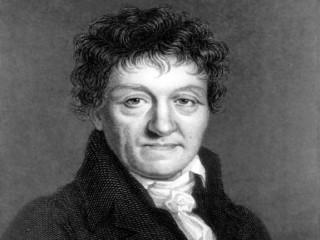
Lazare Carnot biography
Date of birth : 1753-05-13
Date of death : 1823-08-02
Birthplace : Nolay, Burgundy
Nationality : French
Category : Arhitecture and Engineering
Last modified : 2011-09-15
Credited as : military engineer, statesman, French Revolutionary
The French military engineer, soldier, and statesman Lazare Nicolas Marguerite Carnot refashioned the French Revolutionary armies into an effective fighting force. For his invaluable services he was called the "Organizer of Victory."
Lazare Carnot was born on May 13, 1753, in Nolay, Burgundy, where his father was a lawyer, royal notary, and local judge. He was educated at Autun and at the Ecole de Mezieres. Upon graduation he joined the army as a military engineer. He first earned attention for his Eloge de Vauban, in praise of the Marquis de Vauban, Louis XIV's great military engineer and social critic, who became Carnot's ideal. His involvement in the controversies over the utility of frontier fortifications, on the side of innovator Marc Rene Montalembert, earned the displeasure of his superiors, and he was imprisoned for a short period. After marrying Marie Jacqueline Sophie Du Pont in 1791, he settled in Arras, where he became a member of the local academy and gained renown for his brusque revolutionary zeal. He condemned the flight of King Louis XVI as practical abdication and called for the establishment of a republic.
Carnot was elected to the Legislative Assembly as deputy from Pas-de-Calais and concerned himself with military affairs. His republican zeal caused him to condemn the accepted doctrine of passive obedience within the army. A soldier was a citizen, according to Carnot, and therefore should be accorded the same rights as a civilian, except in times of actual combat. In this way he registered his protest over the suppression of the revolt of the garrison at Nancy. He supported the declaration of war in 1792 as a means of stabilizing the Revolution. During most of his tenure in the Legislative Assembly and in the National Convention, Carnot was on missions to various military fronts, where he was actively involved in purging the army of disloyal or incompetent elements.
In 1793 Carnot became a member of the Committee of Public Safety, where he helped to direct the war effort by transforming the levee en masse (citizen army) into an effective military instrument. Working 17 hours a day, he managed 14 armies and was constantly involved with the creation and organization of the instruments of war. Later that year he was in Alsace and aided J. B. Jourdan in lifting the siege of Maubeuge. After that Carnot directed operations from Paris. Jourdan's victory at Fleurus in 1794 left France free from invasion for the next 20 years and was a tribute to Carnot's success as minister of war. His successes, however, intensified the rivalries and differences within the Committee of Public Safety, particularly between himself and Louis de Saint-Just.
Though Carnot served on the Thermidorian Committee, in the Five Hundred, and as a member of the Directory, his rigid personality and hatred of illegality led to his exile in 1797. With Napoleon's rise to power Carnot returned to France, where he served as minister of war for a short period in 1800. He retained his seat in the Tribunate (until its dissolution in 1807), where he displayed his courage by voting against the life consulate for Napoleon and the establishment of the empire. After his retirement he devoted himself to his mathematical interests and wrote his famous essay, The Defense of Fortified Places (1810).
Following the French defeats of 1813, Carnot offered his services to Napoleon and was appointed governor of Antwerp. After Napoleon's exile to Elba, Carnot successfully defended himself before Louis XVIII, but his opposition to the politics of the restored monarchy prompted him to again serve Napoleon during the Hundred Days as minister of the interior. After Napoleon's defeat at Waterloo, Carnot was exiled for life by Louis XVIII and died in Magdeburg in Prussian Saxony on Aug. 2, 1823. Finally, on June 10, 1899, the ashes of the "Organizer of Victory" were brought home to rest in the Pantheon.
















